Helen Vivian reflects on that re-wilding project that enabled a garden to grow a temple.
“The Mallee Sky-Garden, in Victoria’s northwest corner, lies within the ancient ancestral lands of the Nyeri Nyeri Peoples. The People of the Nyeri Nyeri are thankful and welcome this beautiful garden to take its position within these lands and most importantly to continue its gift of forever giving life.”
Nyeri Nyeri elder Mark Grist, Grist Archaeology.
I did not plan for any of this. It just grew. You can’t plan when you do not yet know where the garden may take you. That is not to say that I haven’t done enormous amounts of research and put great thought into every planting. One flight of fancy I have is to paper the walls of a gallery with all my spreadsheets. It is astounding how many I have created and how detailed they are. Listing every plant species that has ever been recorded in the area. About 40% of these endemic species are now listed as rare or endangered, and it is my mission to bring them all together in the Sky Garden. But I did not know this at the start, in 2015.
I am a curator (of contemporary art). Curator is also the title given to the creator of a garden. However, the big difference with a garden is that the curator is also the maker. That and the element of time. To make a garden, you have to be able to imagine what it will be like in 100 years time: the story it will tell to visitors. Some of my plantings are designed to tell a very particular story.
Like the orchard. Planted to honour the horticultural history that has transformed this landscape into a food bowl and the diverse multicultural communities that work it. I placed the orchard rows on an angle to the native garden and keep it mowed and the edges trimmed. Its manicured lines are punctuated by a row of Italian pencil pines and English roses, with an abundant underplanting of mixed bulbs and iris that pop up in early Spring (like seasonal workers). The rich colours and formal design create a strong contrast to the softness of the native garden.
The orchard is surrounded by a new planting of native grasses and Murray Pine trees. I imagine visitors a hundred years from now, thinking that the magnificent pines sheltering them from the sun must have been cut down to make way for the orchard. Indeed, they were right across the district until less than 1% of the endemic Murray pine forests remain in Vic and NSW. But here, the story has been reversed.
- Domenico de Clario performance for Tonglen, 2023, digital image, dimensions variable. Photo Nathan Moore
- Billy buttons with Austrostipa elegantissima in the Temple garden, 2021, digital image, dimensions variable. Photo Helen Vivian
- Xanthoreas surrounding sculpture by Stevie Fieldsend, 2023, digital image, dimensions variable. Photo Ross Lake
- Banksia repens (foreground) and blechnifolia, 2023, digital image, dimensions variable. Photo Nathan Moore
- Aerial view orchard, pencil pines (right) and part of Sky garden block 1, 2024, Photo Ben Wriggley
Re-wilding the Mallee is like re-writing the history of this landscape backwards. First, I erased the lines of the orchard and vines etched into the surface layer. Next, I terraformed a series of rolling dune formations to mimic the dune fields of the nearby Murray Sunset National Park and provide a range of habitats suited to different plant species. Then, a voyage of plant discovery began, venturing into Terra Ignota, because a garden is time travel.
The Sky Garden did not begin as a re-wilding project. It began with a collection of rare and endangered West Australian plants and seeds bequeathed by the late great Graeme O’Neill. There are now about seventy-five rare species in the garden. I began with native grasses and a sheltering ring of trees. Along the way, the eye learns the subtle beauty of indigenous plants like the local grass Austrostipa elegantissima, Brachyscome and Olearia daisies, saltbush and Eremophila species, and the coral-like forms of mallee eucalypts.
Recent multi-disciplinary research has revealed that traditional land management practices in the region were greatly disrupted as early as the 1830s,100 years prior to irrigated horticulture, and had ceased by 1850 due to the decimation of the indigenous population. Traditional owner land management produced large grassy plains and grassy woodlands with pines as the dominant tree and often with wells. There are frequent reports of scenic and park-like areas in early reports. Here’s an example from 1890:
“Its richness and the beauty of the vegetation were a surprise… For miles in all directions belts and clumps of pine, myall, belar, bulloak and apple bush were growing in rich luxuriance. It was like a great park on which infinite skill had been expended to produce striking landscape effects.”
And so the garden led me by the hand into another terra ignota, the indigenous history of the area. This is not my story to tell, but the garden and everything that grows here will. The discovery that Murray Pines were cultivated by traditional owners and that this landscape was not mallee, as I had originally thought, but pine forest, was like a bell ringing: one of those Tibetan bells that resonates infinitely.
And another… I met Sister Chan, a Vietnamese Buddhist nun, walking in the garden three years ago. I soon discovered that she had been a disciple of Thich Nhat Hanh, studying at Plum Village, his monastery in the south of France. Thich Nhat Hanh is known as the father of mindfulness and the greatest inspiration for engaged Buddhism and Western Buddhist practice. He was a poet, prolific writer, and peace activist nominated for the Nobel Peace Prize in 1967 by Martin Luther King Jr. Sister Chan had been sent to establish a Temple and Zen meditation centre in Mildura and was looking for some land. So, I offered her a portion of the newly landscaped second block, now known as the Temple Garden.
- Rose Ceremony for Ancestors Day, 2024, Photo Helen Healy
- Monastics bless the Temple site, 2023, Photo Helen Vivian
- Lion dance celebrations Oriental New Year, 2023, digital image, dimensions variable. Photo Ross Lake
I am not a Buddhist, but during difficult times in my life, I listen to Thich Nhat Hanh’s recordings. Like most people, I am familiar with Zen philosophy and like to apply it to everyday things, like Zen in the art of housework or trying to be at peace with flies swarming in your face when gardening. And like trying to have compassion for the suffering of others, from the microbiome to the tallest tree. And, of course, the suffering we all experience in life.
These are not great and noble thoughts, but they are things of great practical importance and use to us.
So far, on our temple building journey, we have obtained a planning permit for the Sky Temple, established a Board of governance, a not-for-profit association, become a registered charity, built a website and strong community support, raised $150,000 and are in the process of creating a new land title for the Sky Temple which will be gifted to Sister Chan and the Sky Temple Pty Ltd. The Sky Temple will belong to the community and will be built by the community. The architect is at work, and we hope to start building in 2025/2026.
I imagine telling my farmer father about the garden I made and how it grew a temple, as well as beautiful artworks by Domenico de Clario and Stevie Fieldsend. The garden itself is an artwork, a vast land sculpture with a delicate painting of plants applied to its surface. “Pie in the Sky” he would say. That is how the garden got its name: a celebration of blue sky dreaming. But the temple is not named for the garden, it is named for Thich Nhat Hanh: Hanh (xanh) means blue sky in Vietnamese.
I did plan some aspects of this journey, but the paths have forked so many times, and new things have grown up where once there was only a flat, empty paddock growing weeds. I want to acknowledge landscape architect Cath Stutterheim for the original landscape plan on the first 7-hectare block where this story began. We are now planting block 4, and the garden has grown to 30 hectares.
The making of the Mallee Sky Garden and the journey towards the building of a Buddhist Temple and Zen meditation centre in Irymple, near Mildura, is a voyage of discovery that can be followed at www.skytemplemildura.com.au.
You have to start with insufficient knowledge…you have to have that kind of courage…
There isn’t time to wait for grace…Think of a worm’s blind rearing at the edgeof a leaf, or a skydiver turning somersaults:you have to have that kind of courage.
you have to start with insufficient knowledge…
Excerpted from Insufficient Knowledge, Bronwyn Lea
About Helen Vivien
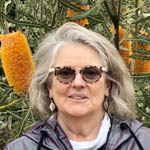 Helen Vivian is the Curator of the Mallee Sky Garden and a board member of Sky Temple Mildura Pty Ltd., a not-for-profit company and registered charity. Helen has worked as a Curator of contemporary art, curating many exhibitions including Mildura Palimpsest Biennale (2011, 2013, 2015), and published When You Think About Art, Macmillan Australia, 2008. Helen has a B.A. Environmental Design, 1983; and a M.A. in Environmental Studies, 1986; both from the University of Tasmania; and a Master of Arts in Visual Culture, from Monash University, 2004. The Sky Garden brings her passion for art and nature together on a thirty-acre canvas.
Helen Vivian is the Curator of the Mallee Sky Garden and a board member of Sky Temple Mildura Pty Ltd., a not-for-profit company and registered charity. Helen has worked as a Curator of contemporary art, curating many exhibitions including Mildura Palimpsest Biennale (2011, 2013, 2015), and published When You Think About Art, Macmillan Australia, 2008. Helen has a B.A. Environmental Design, 1983; and a M.A. in Environmental Studies, 1986; both from the University of Tasmania; and a Master of Arts in Visual Culture, from Monash University, 2004. The Sky Garden brings her passion for art and nature together on a thirty-acre canvas.

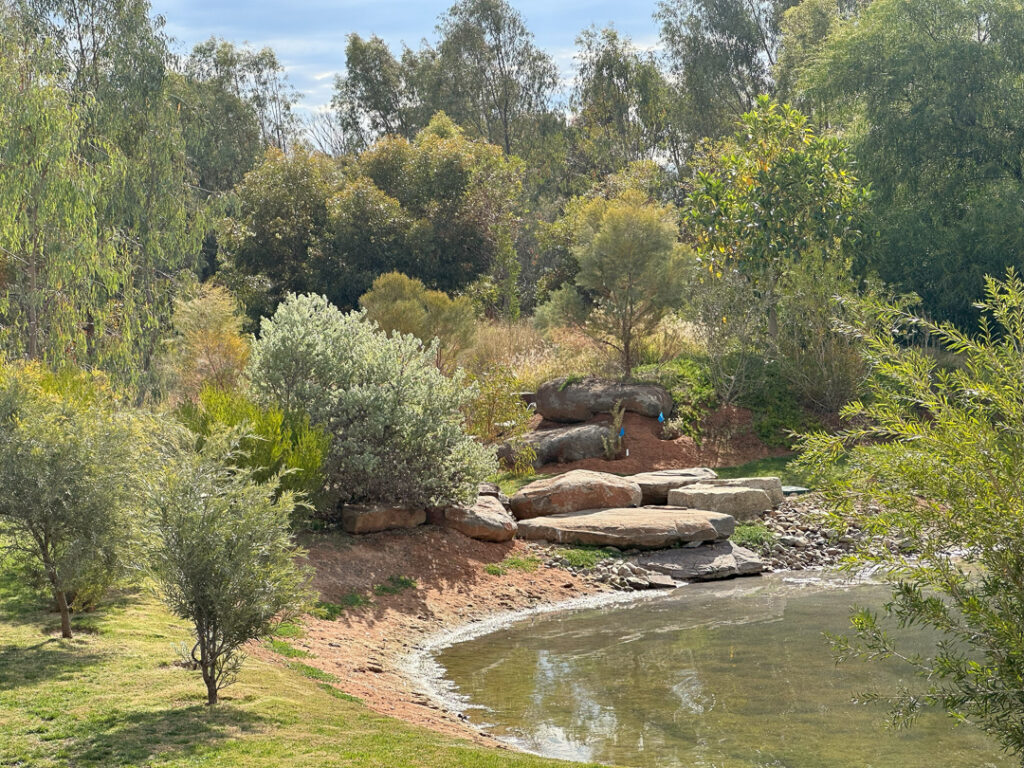
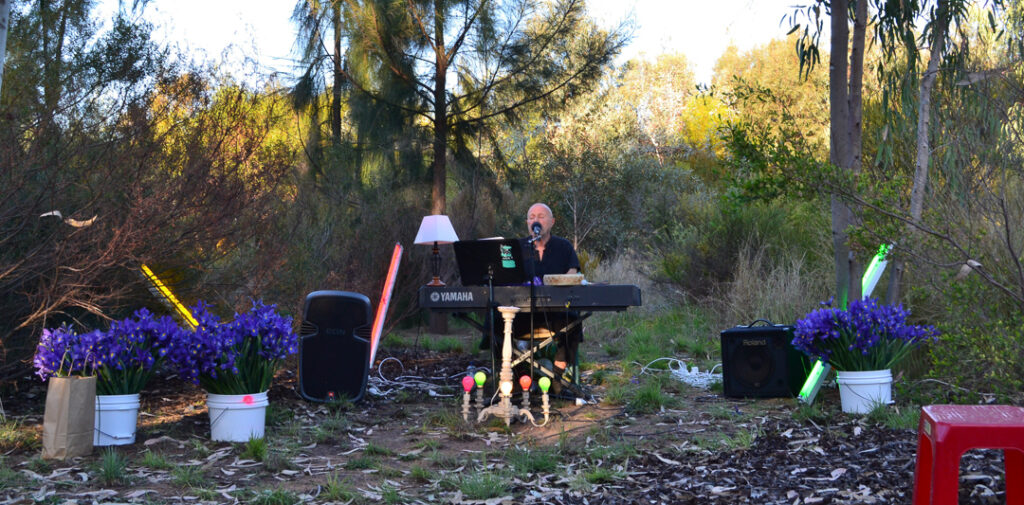
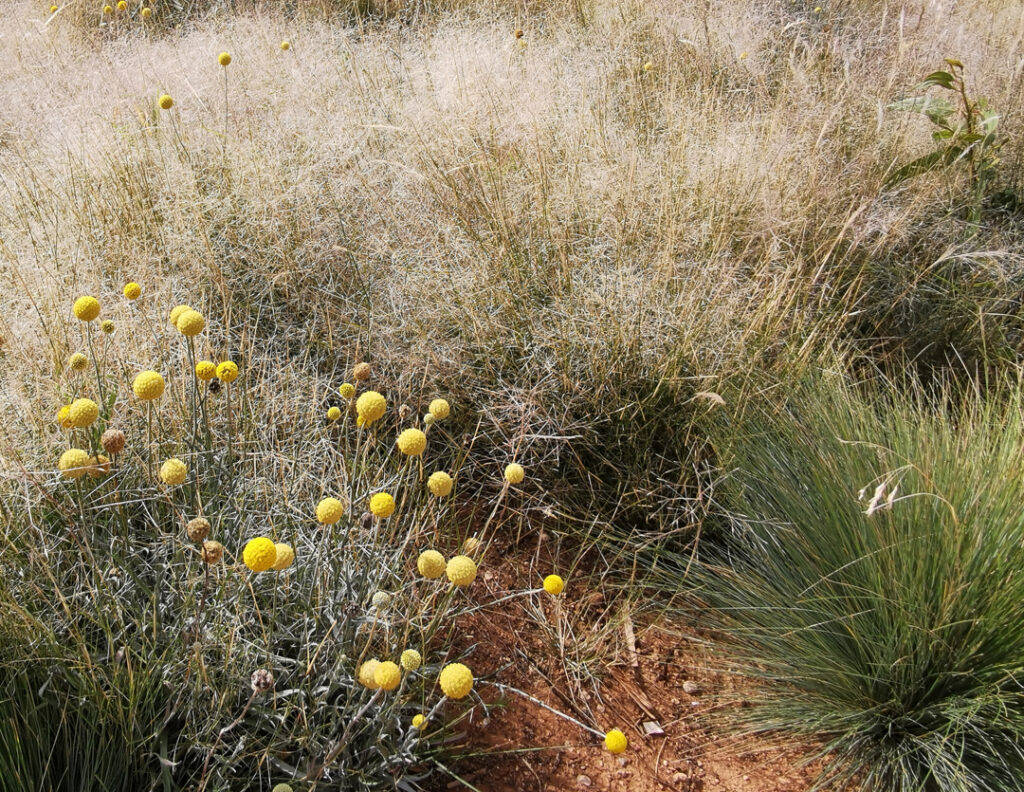
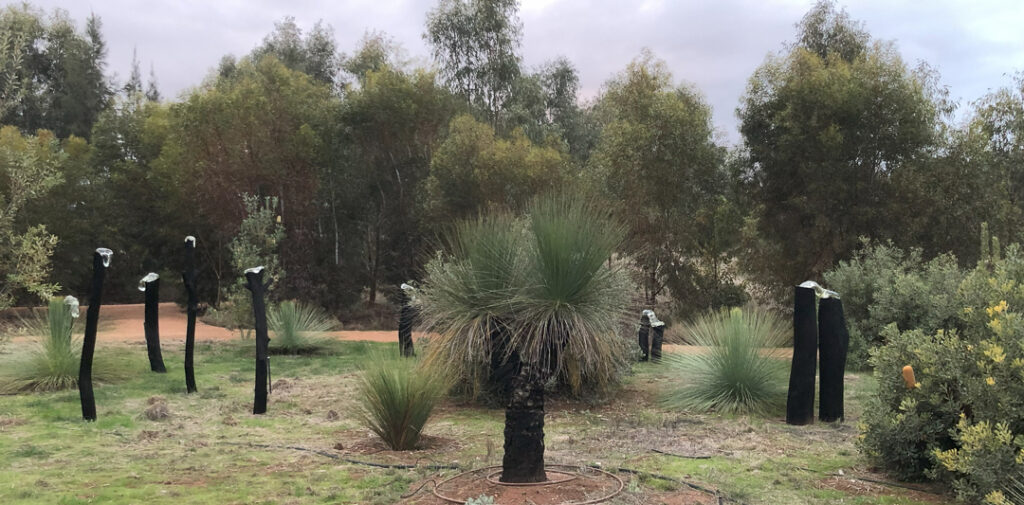



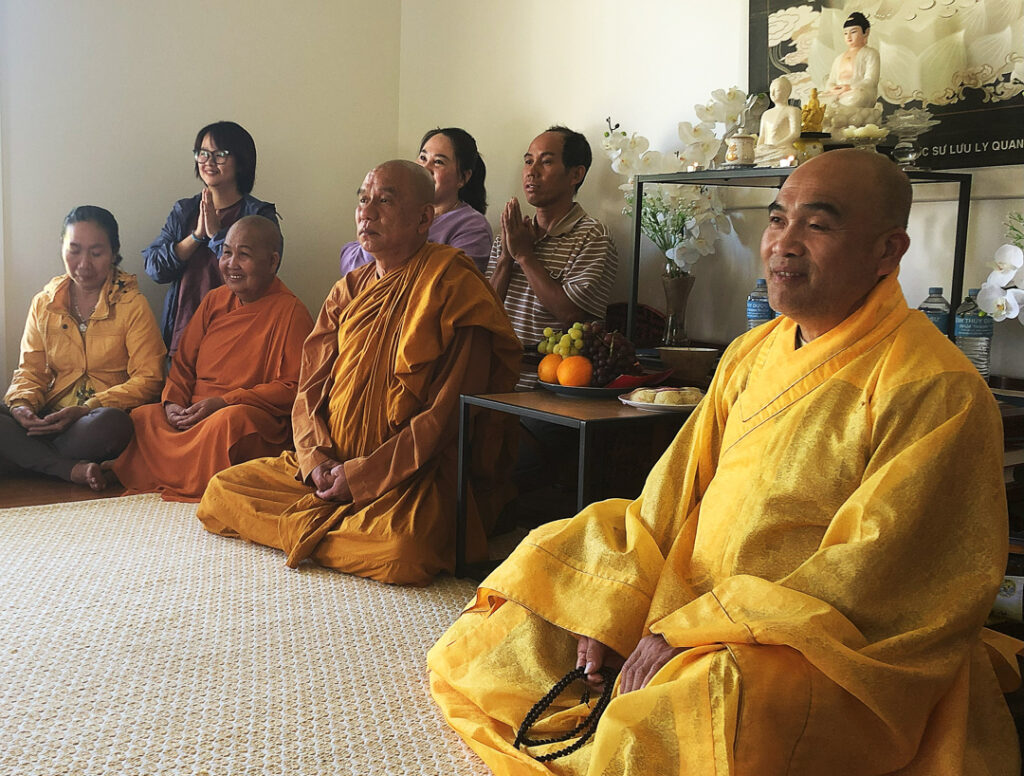
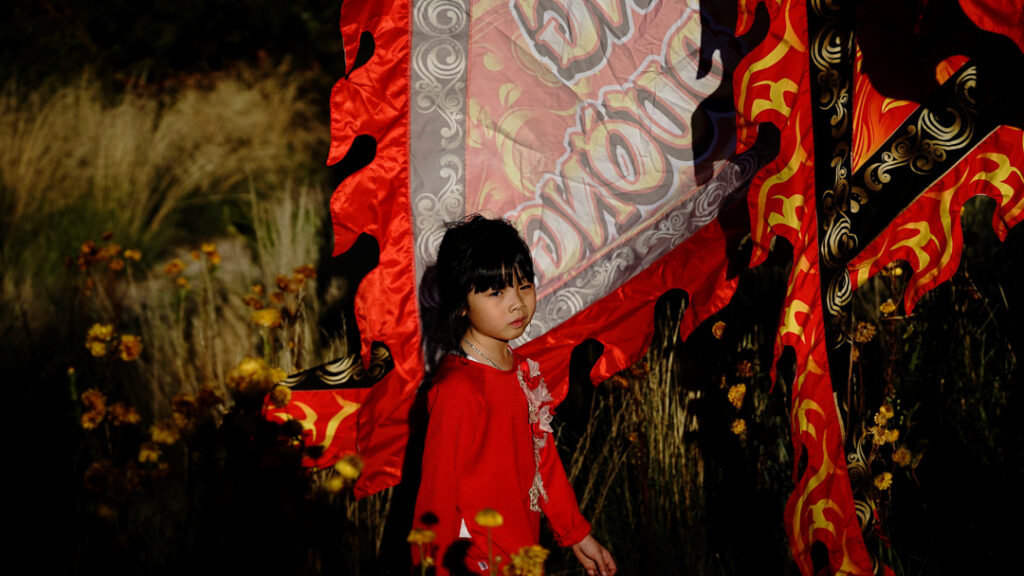

Comments
Hello,
Thank you for the illustrated references in this page. I am an avid reader of Garland magazine and a passionate follower of the work of Domenico de Clario and Helen Vivian.
Please see information about the multidisciplinary ethnographic exhibition titled: Memories That Make Us.
This group exhibition which features text, textiles, photography, sculptures and personal effects installations, could easily be subtitled: The Potted History of Italian Migration.
We hope that this exhibition will be of sufficient interest to you to view it and write an article for Garland magazine.
Please see content in the document titled: INVITATION
CO.AS.IT. Italian Assistance Association and Deakin University invite you to
Memories that Make Us: Home Is a Distant Shore
Exhibition opening | Film screening | Panel | Live music | Light refreshments
Date: Thursday 20 March 2025
Time: 5:30-8:00pm.
Location: CO.AS.IT., 199 Faraday Street Carlton
Free Event: Registration essential here:
https://www.coasit.com.au/memories-that-make-us
This event will be recorded. Please scroll down for further information.
Exhibition: 20 March – 16 May 2025. Tues-Fri 10am-5pm; Sat 1-5pm
Presented by CO.AS.IT and Deakin University
Memories That Make Us: Home Is a Distant Shore draws on the individual and collective memories of Italian migrants who made Victoria, Australia their home after the end of World War Two. It gives us a further look behind the curtain at the lives of some of the storytellers from award winning documentary Memories That Make Us: Stories of post-World War Two Italian Migration to Australia. From the ruins of post-World War Two Italy, hundreds of thousands of people migrated to Australia, shaping one of the largest documented migrations in history. This exhibition explores the cultural and social stories these migrants carried with them, what they left behind, and how their traditions and experiences evolved over time. Through artifacts, photographs, and personal accounts, the exhibition offers a profound reflection on resilience, identity, and transformation—ensuring that a generation of stories is not lost. These are the stories of Australia, of the challenges and achievements of migration—the memories that make us all. In this exhibition, artworks, photographic timelines and moving visuals created by Italian migrants and their descendants, pay homage to their stories.
The exhibition emerges from a long-term research project conducted in the School of Communication and Creative Arts at Deakin University led by Associate Professor Toija Cinque, Associate Professor Martin Potter and Professor Sean Redmond, with the support of CO.AS.IT. Italian Assistance Association, in collaboration with senior researcher and Il Globo journalist Riccardo Schirru and multicultural communications expert and project manager Fotis Kapetopoulos.
Biographies of participants
Martin Potter (co-curator): Martin Potter is an award-winning creative director and producer of documentary, transmedia and media for development projects. Martin has an extensive record as a documentary producer including 20+ hours of commissioned broadcast television content in Australia as well as founding and running 2 media companies from startup to sale. Since 2006 Martin has focussed on how creative work can foster community and drive social change and has undertaken this work across Australia, Asia, Africa and the Pacific. He is director of the Big Stories Co., president of Engage Media, a non-profit organisation using video and open technologies to facilitate social and environmental change across the Asia Pacific and Associate Professor in Screen and Design at Deakin University.
Toija Cinque (co-curator and artist): Toija Cinque is Associate Professor in Communication (Digital Media) in the School of Communication and Creative Arts at Deakin University, Australia. She is the founder of the Intelligent Media Lab and convenes the Critical Digital Infrastructures and Interfaces (CDII) research group. Cinque’s work examines the media developments of digitisation, datafication, and platformisation with a techno-cultural focus. Cinque’s publications include Emerging Digital Media Ecologies: The Concept of Medialogy (Routledge, 2025); Changing Media Landscapes: Visual Networking (Oxford University Press, 2015); The Dark Social: Online Practices of Resistance, Motility and Power (Routledge, 2023);Materializing Digital Futures: Touch, Movement, Sound and Vision (Bloomsbury, 2022). She recently co-curated EcoDigital Futures for Melbourne Design Week (2024) and is planning an exhibition for Wasa Future Festival in Finland (2025).
Pip Minney (co-curator): Pip Minney is a curator and exhibitions producer with extensive experience in developing and delivering engaging exhibitions and audience engagement programs. She has held roles at institutions such as the National Gallery of Australia, National Gallery of Victoria, and Geelong Gallery. In her current position as Manager, Exhibitions and Public Programs (A/g) at Deakin University Library, Pip collaborates with researchers, artists, students and academics to present thought-provoking exhibitions that bridge academia and the wider community.
Carla Maggio De Leo (co-curator and artist): Carla is an emerging creative from Melbourne with a love for music, performance and storytelling. A descendant of Italian migrants who came to Australia following World War Two, Carla has grown up with a mixture of traditions, dialects and treasured stories from her Nonni about their homeland. Carla played a key role in the Memories That Make Usdocumentary, conducting interviews, researching, and collecting stories across Victoria. She has worked as a producer, actor and writer across many mediums from film, music, theatre and now makes her debut as a curator. She is very proud to be a part of celebrating the histories, hardships and successes of her ancestors.
Lella Cariddi (artist): Lella Cariddi OAM is an Italian born writer, Multidisciplinary Curator, Social Researcher and collaborator who lives in Melbourne/Narrm. To inform the process and contents of her work as it relates to communities of culturally diverse heritage including the Italian community, her practice of more than fifty years encompasses themes of identity and inclusion. Her intergenerational projects reflect experiences of migration, displacement and re-settlement. Her exhibitions, publications, performances, short-form documentaries, podcasts, symposia and readings have been featured at CO.AS.IT., Federation Square, City of Port Phillip, Mildura, Ballarat, Bendigo and Dandenong. In 2017, Lella Cariddi and Adam Ricco were jointly awarded the Victorian Community History Award.
Frank Di Blasi (artist): Frank Di Blasi is a dedicated and passionate advocate for Melbourne’s Italian community. Originally from Vizzini, Sicily, he has called Melbourne home for 63 years, dedicating six decades to enriching his local area through extensive service and cultural contributions. His unwavering commitment has earned him numerous honors, including an Order of Australia Medal (1984), a knighthood (Cav.) from Italy’s President Francesco Cossiga (1986), and Moonee Valley’s Citizen of the Year (2019). Through his photography, he has captured the everyday moments of love, celebration, and success within Melbourne’s Italian community, preserving a rich visual history. Though he retired a decade ago, Frank remains as active as ever, continuing to champion Italian heritage and community engagement with boundless passion.
Nicola Serbo (artist): Artist Nicola Serbo has compiled a collection of works by her great Nonno Pino Calati, an artist whose life story helped to shape his creative expression. After fleeing war and the communist takeover of Pola, Pino and his family immigrated to Australia in 1949 and settled in Fitzroy, working as a cabinet maker. Despite his trade, his lifelong passion for art remained strong and at the age of 56, he became a full-time artist exhibiting his work and teaching in his community. Through the chosen works, Nicola reflects his natural, unbounded creativity. Often accused by his wife of always having “his head in the clouds,” Pino took inspiration from anything and everything, which is evident in his wide range of artistic styles.
Please note: By attending this event, you acknowledge and agree that photographs and video recordings may be taken during the opening night. These images and videos may be used for promotional purposes, including but not limited to social media, marketing materials, and future event advertisements. If you do not wish to be photographed or filmed, please inform the event staff, and we will make every effort to accommodate your request. By entering the event, you consent to the use of your likeness, without compensation, in any media or promotional materials associated with the event. Thank you for your understanding and cooperation.
Regarding an interview and signature photo, please contact Paolo Baracchi: Paolo Baracchi Paolo@coasit.com.au
Best regards,
Lella Cariddi OAM